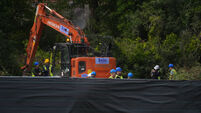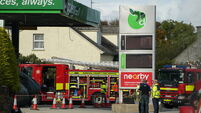Rise in rents and numbers renting as homeownership falls, says CSO

The average weekly rent from a private landlord stood at €273, up 37% on 2016. In Cork, rents rose almost 40%.
The number of households renting in Ireland rose sharply, as did how much they were paying in rent, while the rate of home ownership has fallen, the Central Statistics Office has said.
In the latest of its in-depth publications into the results of Census 2022, the CSO found the increase in the number of homes in Ireland did not keep up with the rise in population since 2016.
Home ownership rates in Census 2022 fell while the total number of households renting rose to over 500,000https://t.co/sr7ZhzFLZW#CSOIreland #Ireland #Census #Census2022 #CensusIreland #Population pic.twitter.com/e2G2mI1L5r
— Central Statistics Office Ireland (@CSOIreland) July 27, 2023
Furthermore, the number of households headed by a person over the age of 65 renting from a private landlord almost doubled to 17,000 between 2016 and 2022.
Overall, the number of renters increased to 513,704 households in 2022, up 9%. The number of owner-occupied homes with a loan or mortgage stood at 531,207, down 1%. While the number of owner-occupied homes without a mortgage rose 11% to 679,718.
The increase in renters means the rate of home ownership stood at 66% in Census 2022, down almost 70% on Census 2011.
By the age of 36, more than half of householders owned their home — with or without a mortgage — in Census 2022. But this age has been increasing over the years.
In Census 1991, more than half of people aged 26 owned their home. This rose to more than half of 27-year-olds owning a home in 2002 and to more than half of 28-year-olds in 2006. This then jumped sharply to more than half of 32-year-olds in 2011 and 35-year-olds in 2016.
For renters on Census night in 2022, they were paying on average significantly more than they were in 2016.
The average weekly rent from a private landlord stood at €273, up 37% on 2016. In Cork, rents rose almost 40%.
In 2016, just 13,232 households were paying a weekly rent of €400 or more. This rose to more than 52,000 households across the country in 2022.
The lowest average weekly rent was the €134 being paid in Donegal (up 29%), while the highest was in Dún Laoghaire-Rathdown of €442 (up 32%).
At State-level, the housing stock increased by 5%, while the population rose by 8%. This is only a recent trend that began in 2016. Before that, the numbers added to the Irish housing stock exceeded the rise in population.
The fastest growth in housing stock was recorded in Meath and Kildare (both over 11%) and the slowest in Tipperary. In Tipperary, Donegal and Leitrim, the rise in population was more than double the increase in the number of homes in those counties.
Separate data from the census revealed almost 72,000 households, or 4% of occupied homes, had no working smoke alarms.
A new question on renewable energy sources, meanwhile, showed the number of homes with solar panels in the country stood at 119,300, or 6% of occupied homes. Meath had the highest proportion of homes with solar panels, at 11%, with Dublin the lowest at 3%.
Questions were also asked about broadband, with some 1.46 million households (or 79% of occupied homes) having a connection.
However, one in five households headed by someone aged 65 or over had no internet connection of any kind. This compared to just 3% of households headed by someone aged 30 to 44.
The number of long-term vacant homes remained static at 48,000, or 2% of housing stock.







